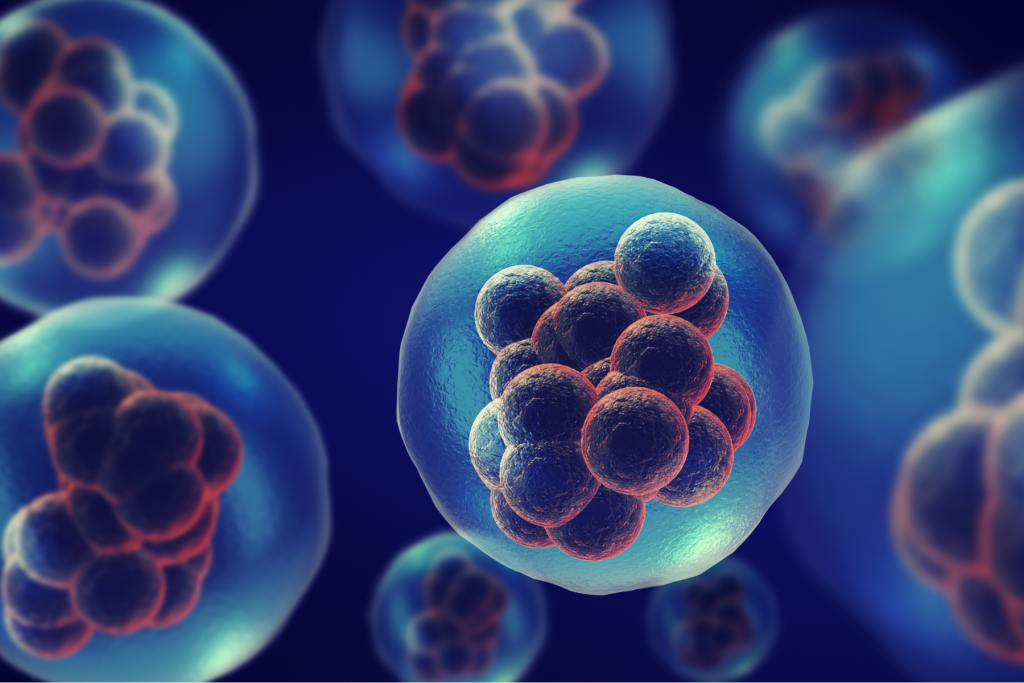What are Stem Cells?
Stem cells have become a focal point of medical research and innovation, captivating the imagination with their remarkable potential to revolutionize healthcare. But what exactly are stem cells, and why are they generating so much excitement? At the core of this fascination lies the unique ability to regenerate and differentiate into various cell types, holding promise for treating a myriad of medical conditions.
Stem cells are undifferentiated cells that possess the extraordinary capacity to develop into specialized cell types with specific functions. Unlike mature cells in the body, which have distinct roles, stem cells retain the remarkable ability to self-renew and generate specialized cell types through a process known as differentiation. This inherent versatility makes them invaluable in regenerative medicine, where we harness their ability to repair or replace damaged tissues and organs.
How Do Stem Cells Work?
- Self-Renewal: Stem cells have the unique ability to divide and produce identical copies of themselves indefinitely. This process, known as self-renewal, allows stem cell populations to replenish themselves and maintain their numbers over time.
- Differentiation: Stem cells can differentiate into specialized cell types with specific functions. This process enables stem cells to develop into various cell lineages, such as muscle cells, nerve cells, blood cells, and more. Depending on the signals they receive from their environment, stem cells can give rise to different cell types needed for tissue repair and regeneration.
- Tissue Repair and Regeneration: Stem cells play a crucial role in repairing and regenerating damaged tissues and organs in the body. By differentiating into specialized cell types, they can replace lost or injured cells, facilitating the healing process. This capability holds promise for treating a wide range of medical conditions, including injuries, degenerative diseases, and disorders.

Myth 1: Stem cell injections are unproven and experimental
Reality: Stem cell therapy is extensively researched, and numerous clinical trials demonstrate its safety and efficacy. In fact, the FDA has approved several stem cell-based treatments, such as those for blood disorders and certain types of cancers. Stem cell injection therapy is not a mere experiment; it’s a well-established and continually evolving field of regenerative medicine.
Myth 2: Stem cell injections are only effective for specific conditions
Reality: It’s commonly believed that stem cell injections are limited to a particular set of conditions but they are not. Research and clinical trials have shown promising results in treating a wide range of issues, including joint pain, autoimmune diseases, neurological disorders, and even heart conditions. They have the potential to differentiate into various cell types, making them versatile in addressing different health concerns.
Myth 3: Stem cell injections can lead to the development of tumors
Reality: The fear of tumor formation is often associated with stem cell therapy. However, numerous studies have shown that the risk of tumor development is extremely low. Rigorous screening processes and adherence to ethical guidelines minimize the chances of introducing harmful cells during the therapeutic process. In fact, stem cells play a crucial role in the body’s natural repair and regeneration mechanisms.
Myth 4: All stem cells are created equal
Reality: You can gather the cells from multiple different places. Embryonic, adult (bone marrow and adipose) and perinatal stem cells. Each type has been more effective and worse at treating different conditions. This is an extremely common misconception even among doctors who have not been trained in orthobiologic treatments.
Myth 5: Stem cell therapy is a purely cosmetic procedure
Reality: While this therapy has gained attention for its applications in cosmetic procedures, such as anti-aging treatments, its potential extends far beyond aesthetics. Injections have shown remarkable efficacy in addressing serious medical conditions, including orthopedic issues, autoimmune diseases, and neurological disorders. The versatility allows for a broad spectrum of therapeutic applications, making it a viable option for medical purposes.
Myth 6: The main source of stem cells are from embryos
Reality: Embryonic stem cells have been all but eliminated from clinical use and in research as well.
Myth 7: Stem cell therapy is not regulated
Reality: Stem cell therapies are subject to strict regulations and oversight by health authorities. Reputable clinics adhere to established guidelines to ensure the safety and efficacy of the procedures. It’s crucial for patients to seek treatment from licensed and accredited facilities to guarantee the highest standards of care.
Seeking Professional Advice
As we debunk these common myths, it becomes evident that stem cell injection therapy is a safe and effective option for various health conditions. With research and advancements, the future of regenerative medicine looks promising. It offers hope for patients seeking innovative solutions to their health challenges.
Learn More About Alternative Ways to Alleviate Your Pain
Get back to doing the things you love, faster & without surgery.
Request an Appointment Today!
Sources:
Zakrzewski, W., Dobrzyński, M., Szymonowicz, M., & Rybak, Z. (n.d.). Stem cells: past, present, and future. Stem Cell Research & Therapy, 10(1). https://doi.org/10.1186/s13287-019-1165-5